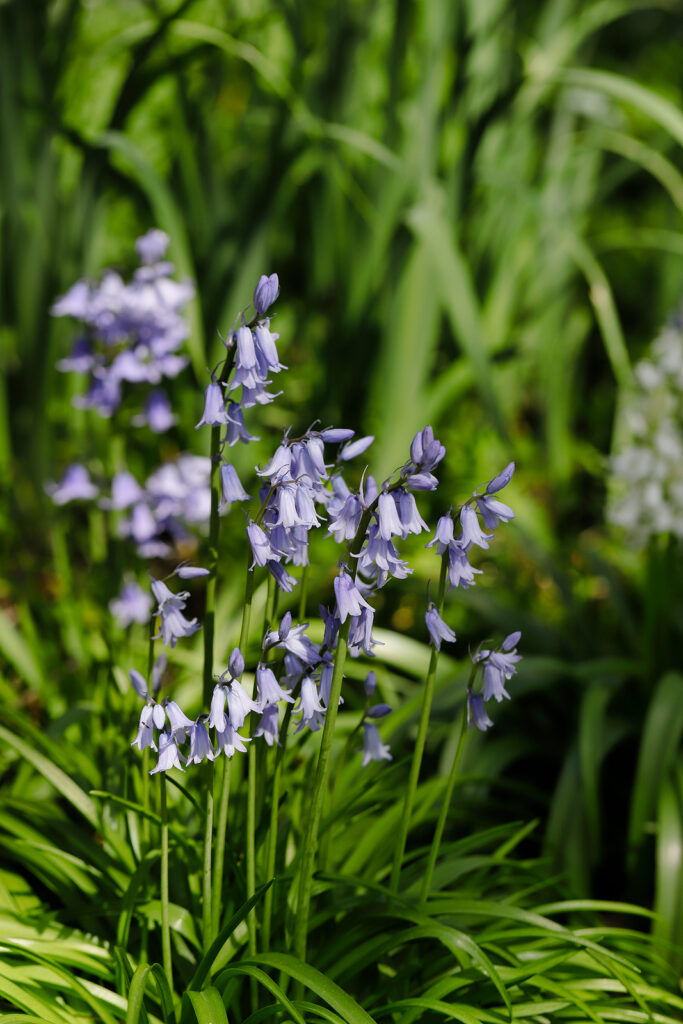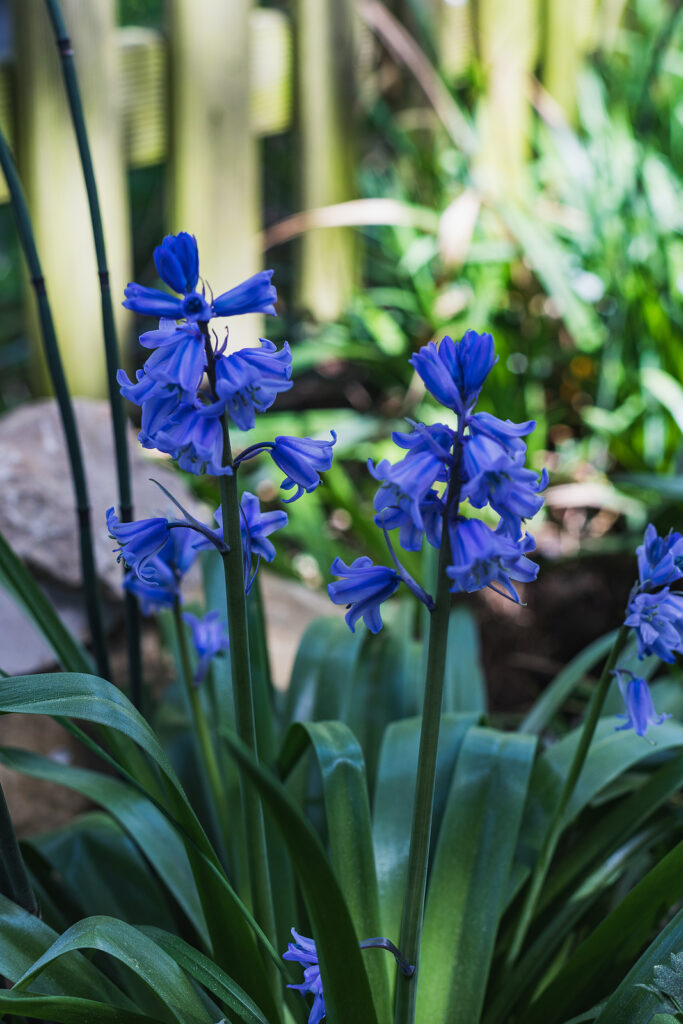Hyancinthoides — sometimes called bluebells–bears charming racemes of small bell-shaped flowers in spring. Blossoms are blue or white and sometimes pink; they appear above lance-shaped or linear leaves.
Hyancinthoides is a Turnicate bulb which means it is renewed annually–new bulbs form each year to replace the old one that dies. Hyancinthoides also self-sows, so there is little need for replanting once Hyancinthoides is situated in the garden.
Hyancinthoides grows best in partial shade. It is a good choice for a woodland garden or for naturalizing in a lawn. Hyancinthoides prefers partial shade as the season goes on so a good location is under a deciduous tree where plants get early spring sun and then are shaded in late spring.
Hyancinthoides is a genus of three or four species. Hyancinthoides were once classified in Endymion by taxonomists.

Get to know Hyancinthoides
- Plant type: Bulb
- Growing zones and range: Zones 4 to 9.
- Hardiness: Hardy to Zone 4
- Height and width: 4 to 16 inches (10-40cm) tall and half as wide depending on the variety.
- Foliage: Basal, strap- to lance-shaped or linear leaves.
- Flowers: Small bell-shaped flowers have six lobes, petal-like tepals that are united at the base are borne on racemes; colors in shades of blue, lavender, violet, pink and white; some species are fragrant.
- Bloom time: Early spring
- Uses: Wildflower or woodland garden or shrub border.
- Garden companions: Daffodils, tulips
- Common name: Bluebells
- Botanical name: Hyacinthoides
- Family name: Liliaceae
- Origin: Western Europe and North Africa
Where to plant Hyancinthoides
- Plant Hyacinthoides in partial or dappled shade.
- Hyacinthoides will tolerate full sun; they can thrive under deciduous trees, where they will receive a good amount of sunshine in spring during active growth.
- Plant Hyacinthoides in well-drained, humus-rich soil.
When to plant Hyancinthoides
- Plant Hyacinthoides bulbs in spring.
- Plant Hyacinthoides offsets in fall.
- Sow seeds in containers as soon as they are ripe–end of the bloom period.
Planting and spacing Hyancinthoides
- Set Hyacinthoides bulbs 3-4 inches (7.6-10.2cm) deep.
- Hyacinthoides produce abundant offsets; space them generously—about 6 inches (15cm) apart–so they don’t need division each year.

How to water and feed Hyancinthoides
- Keep the soil evenly moist.
- Fertilize Hycinthoides with an all-purpose organic fertilizer in spring.
How to care for Hyancinthoides
- Remove flowers as they fade to prevent self-seeding.
- All parts of Hyancinthoides can irritate the skin and cause illness if ingested.
Hyancinthoides pests and diseases
- Hyacinthoides can develop blight, mosaic, or rot.
- Hyacinthoides can develop aphids.
Hyancinthoides propagation
- Separate Hyacinthoides bulbs after blooming in early summer as the foliage die down; divisions and offsets can be replanted right away or in autumn.
- Divide Hyacinthoides only if they become overcrowded and begin to bloom less.
- Hyancinthoides will self-sow if flowers are left on the plant.
Hyancinthoides varieties to grow
- Hyacinthoides hispanica (formerly Endymion hispanicus, Scilla hispanica, and S. campanulata), Spanish bluebell: produces blue flowers above clumps of glossy green leaves topped by showy racemes; bears 6 to as many as 15 bell-shaped, unscented, lavender-blue .75 inch (1.8cm) flowers in spring; the plant grows 12-16 inches (30-41cm) tall. ‘Rosabella’ has lavender-pink flowers. ‘Excelsior’ has violet-blue flowers with pale blue stripes and is somewhat larger, reaching 20-24 inches (51-61cm) in height. Zones 4 to 9.
- H. italica (formerly Endymion italicus, Scilla italic), Italian Squill: grows 4-8 inch (10-20cm) tall; bears dense, somewhat rounded racemes of 6 to as many as 30 bell-shaped, .5 inch (1.3cm) long flowers that face upward; flowers are blue or sometimes white and appear in spring. Zones 4 to 9.
- H. non-scripta (formerly H. Scilla non-scripta, and S. nutans), English bluebell: vigorous growth from 8 to 15 inches (20-38cm) tall; bears racemes with 6 to 12 lavender-blue or white scented flowers in spring; flowers are arranged all on one side of the raceme; individual flowers are narrowly bell-shaped, .5-.75 inches (1-1.8cm) long, and have tepals that are curled back at the tips. Zones 4 to 9.















